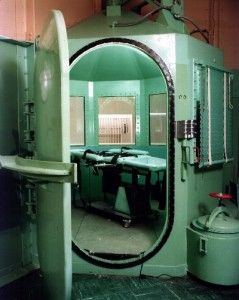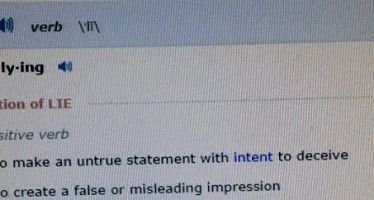Prop. 34 latest attempt to abolish Calif. death penalty
By Dave Roberts
On May 1, 1992, Eric Houston, 20, strode into Lindhurst High School in Yuba County with a 12-gauge shotgun and a .22-caliber rifle. He shot and killed a teacher and three students, wounded 10 others and held 80 students hostage before surrendering after police promised he would serve no more than five years in a minimum security prison.
Houston went on the rampage because he was angry that a teacher (the one that he killed) had flunked him in an economics course, resulting in his flunking out of high school and subsequently becoming unemployed. At his trial, he said he “did not see a value in his execution but felt a fair punishment would be whatever the victims’ families wanted,” according to court documents.
Houston was convicted of first degree murder and sentenced to death. Outside the courthouse, Mary Stickle, whose son Jason White was killed by Houston, told the Sacramento Bee that she would attend Houston’s execution. “[Houston] did not give our kids a chance to do any living,” she said.
Since then, Houston has received free room, board, medical care and educational, recreational and entertainment benefits on San Quentin’s Death Row.
Eight and a half years after the murders, on Nov. 6, 2000, Stickle wrote the following on a commemorative website: “Jason was a hero to many, many classmates, friends, and family. He loved life, lived it to the fullest, and had so many plans. Eric Houston is on death row in San Quentin, California. He has never had an appeal hearing there, never had a court date, and will probably outlive me and my family there. The justice system moves very slowly. It has been 8 long, lonely years since my child has been gone. He was only 19. I love him and miss him everyday.”
Eighteen years after the murders, Houston began looking for pen pals. On his website, he wrote: “My hobbies are reading good books, good music (alternative Music I like: ‘Arcade Fire,’ ‘M.I.A.’ and Love ‘Yaha- Yaha- Yaha’ssss) World History, ancient cultures, travel and reading about places (like Area 51). Reading about NASA and Space travel and News items. Also I love exercising and jogging. I am looking for open-minded penpals. I am 38 years young. A guy who loves laughing and I am a layed [sic] back person with a good smile. I am currently on Death row in San Quentin. I am looking forward to hearing from you! ~Eric Houston.”
Appeals
Twenty years and three months after the murders, on Aug. 1, 2012, Houston’s first of what could be many appeals was rejected by the state Supreme Court. The appeal alleged numerous procedural technicalities: failure to maintain a record of the entire grand jury proceedings, failure to provide requested evidence, under-representation of minorities on the grand jury, failure to administer the oath to prospective jurors, etc. It also argued that the death penalty is unconstitutional.
The Supreme Court ruled against all of it, declaring that Houston’s trial had been fair, and affirming the constitutionality of the death penalty. Houston’s appeals will likely continue in other courts, taking many more years, perhaps decades, to play out.
Twenty years, four months and 17 days after the murders, on Sept. 18, 2012, Mary Stickle spoke at a joint legislative informational hearing on the pros and cons of Proposition 34, which seeks to abolish the death penalty. The three-hour hearing provided numerous arguments, pro and con, by advocates, experts and family members of murder victims. The main argument on the pro-34 side is that California’s death penalty process has become too cumbersome and expensive.
The system
Here is what Stickle said after informing the committee of her son’s murder by Houston:
“People speak about a system being broken, so you’re going to throw it away like you would a piece of candy or a glass. My child was not a glass. His life meant something to me. He was alive 20 years ago. Eric Houston is alive today on Death Row. He’s allowed to do Facebook. If you Google his name, he’ll even ask you to be his pen pal. I take great offense to that. I take great offense to the great state of California allowing this to happen for 20 years, when he’s taken the lives of the people that he killed. He also ruined the life of a student he shot three times in the head who lived. He also destroyed a whole community who can no longer allow their children to go to school and feel safe.
“We just had [Houston’s] first appeal in May because they couldn’t find an attorney for 15 years. Give me a flipping break. That is absolutely too long, and I take great offense to that. Think about your children. If you allow Houston to go with life without possibility of parole, couldn’t he take a wife? My son couldn’t. Do what’s right. Look in your heart. If your child was taken away from you today, and you had to stand before millions of people to beg to think about your feeling for one day. Where’s the justice?”
Since 1978, when the death penalty was reinstated in California, about 900 murderers have been sentenced to death, according to legislative analyst Brian Brown. Only 14 have been executed. Eighty-four died prior to execution and about 75 had their sentences reduced. Currently there are about 729 murderers on Death Row. Most are still going through the appellate process in either the state Supreme Court or state and federal habeas corpus courts.
$130 million
It costs the state about $130 million more annually to house prisoners on Death Row and pay for their appeals than for prisoners in the general prison population.
Everyone agrees that the system is broken. The disagreement is on the solution.
Prop. 34 backers argue that the $130 million would be better spent on law enforcement. Replacing the death penalty with life without the possibility of parole would also ensure that no innocent person is put to death. The most persuasive speaker against the death penalty was Jeanne Woodford, a former warden at San Quentin. She said:
“I’m here because I’ve witnessed the death penalty from many sides. I know it’s a policy that California cannot afford to keep. I began working at San Quentin in 1978. When I started, there were six inmates on Death Row. So I watched Death Row grow as I was promoted through the ranks to where we are today with 729 people on Death Row in the state of California. The largest Death Row in the nation. Having spent over 26 years in San Quentin and carried out four executions, I have watched the death penalty grow out of control, growing so large, expensive and dysfunctional that I came to the only logical conclusion: California’s death penalty is broken beyond repair.
“We are facing a serious public safety gap in California. Forty-six percent of murders and 56 percent of reported rapes go unsolved on average each year in the state. Hundreds of murderers and rapists are on our streets because the money to pay for investigations and apprehend criminals and even prevent violence is not there — it’s on Death Row. I would rather we redirect our tax dollars to solving more rapes and murders, which will make our communities safer for our children.”
Removing fear
Sacramento County Sheriff Scott Jones, representing California State Sheriffs Association, countered that eliminating the death penalty would actually harm public safety by removing a would-be killer’s fear that he could lose his own life if he takes someone else’s life. He said:
“I’ve seen California’s recent push to reduce or eliminate consequences for offenders in prison realignment, in the early release of prisoners, in the virtual elimination of post-release supervision. It has had a tremendous and certain [negative] impact on the citizen safety of California. And eliminating capital punishment would add to that. The result would be that offenders now with nothing to lose would increase their criminality, kill their victims, both adult and children, and increase the assaults, killing of officers and correctional officers. Just last month in San Quentin, a Death Row inmate convicted on three counts of first degree murder and the attempted murder of four others, stabbed two correctional officers in the neck because he himself had nothing to lose.
“The death penalty currently is not used lightly or often. Rather, it is reserved for the most heinous, the most horrific, the most violent, the most premeditated murders: cop killers, child rapists and murderers, serial and mass killers. Proposition 34 seeks to eliminate a tool that is being used judiciously and with the review and consent of juries who deliberate carefully and determine that a death sentence is the appropriate sanction. Prosecutors do not take this charging decision lightly, and they do not play games with the judicial system.
“Sadly, the proponents of Proposition 34 do. They have burdened the system with a flood of appeals and other measures designed not to promote justice, but to promote an agenda. The supporters of this initiative point to delays and costs — and they themselves have caused both. California’s law enforcement community from labor to management to executives is not willing to give up on justice. We are not willing to concede that the system is broke beyond compare. Proposition 34 would create more victims, cause more peace officers and correctional officers to be assaulted and killed, and will allow the most heinous of criminals to avoid the sanction that they have so justly earned.”
The vote on Prop. 34 is likely to be close, but indications are that it may lose. A Sept. 25 Field poll showed that 42 percent support repealing the death penalty, while 45 percent want to keep it. An Oct. 11 California Business Roundtable poll found 43 percent support for Prop. 34, while 48 percent were are opposed.
Related Articles
Speaker, initiative committee spar over transparency measure
A war of words erupted in recent days between the proponents of a transparency ballot measure and Assembly Speaker Anthony
Torlakson continues lying about teacher-discipline law AB 215
Tom Torlakson supports a status quo in which an average of 2.2 of the state’s 275,000 public school teachers are
Republicans in Legislature poised to increase diversity in 2016
Buried beneath the headlines of Donald Trump’s comments of the day and the relatively new top-two primary format that weeded





